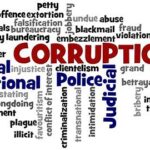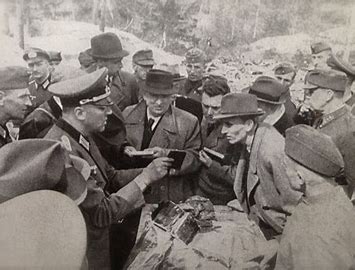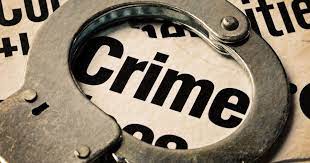Title: The Impact of Crime in the United States: Understanding its Effects on Society, Economy, and Policy
Introduction:
Crime is a pervasive social issue with far-reaching consequences, impacting individuals, communities, and institutions across the United States. From violent offenses like homicide and assault to non-violent crimes such as theft and fraud, criminal activities have profound effects on various aspects of society, including public safety, economic productivity, and social cohesion. This essay aims to provide a comprehensive analysis of the effects of crime in the United States, examining its impact on individuals, communities, the economy, and public policy.
Effects on Individuals:

Crime can have devastating effects on individuals who are victimized or otherwise affected by criminal activities. Victims of violent crimes may suffer physical injuries, psychological trauma, and emotional distress, leading to long-term consequences such as post-traumatic stress disorder (PTSD), anxiety, and depression. Victims of property crimes may experience financial loss, property damage, and disruptions to their sense of security and well-being. Moreover, individuals who become involved in criminal activities as perpetrators may face legal consequences, incarceration, and stigma that can hinder their rehabilitation and reintegration into society.
Effects on Communities:
Crime has profound effects on the social fabric and cohesion of communities across the United States. High crime rates can erode trust, social capital, and community cohesion, leading to increased fear, isolation, and social disorganization. Communities with high levels of crime may experience declines in property values, economic disinvestment, and reduced quality of life for residents. Moreover, crime can exacerbate social inequalities and contribute to the perpetuation of cycles of poverty, marginalization, and social exclusion, particularly in disadvantaged neighborhoods and communities.
Effects on the Economy:

Crime imposes significant economic costs on society, affecting productivity, investment, and public spending in the United States. Direct costs of crime include expenses related to law enforcement, criminal justice, and victim assistance programs, as well as losses from property damage and theft. Indirect costs of crime include impacts on productivity due to lost workdays, medical expenses, and reduced consumer confidence and spending. Moreover, crime can deter businesses from investing in high-crime areas, leading to economic disinvestment, unemployment, and declines in property values. Additionally, the underground economy associated with illegal activities such as drug trafficking and organized crime can undermine legitimate businesses and distort market dynamics, further hampering economic growth and development.
Effects on Public Policy:
Crime shapes public policy and drives responses from government agencies, policymakers, and law enforcement authorities at the local, state, and federal levels. Efforts to combat crime often involve initiatives such as increasing police presence, implementing crime prevention programs, enhancing criminal justice interventions, and enacting legislation to address root causes of crime. Public policy responses to crime also include initiatives aimed at reducing recidivism, promoting rehabilitation and reentry for offenders, and addressing systemic inequalities within the criminal justice system. Moreover, crime-related policy debates often intersect with broader discussions on issues such as gun control, drug policy, immigration, and social welfare, highlighting the complex and multifaceted nature of crime and its impacts on society.

The Social and Psychological Impact of Crime:
In addition to its tangible effects, crime can also have profound social and psychological impacts on individuals, families, and communities. Victims of crime may experience feelings of fear, vulnerability, and mistrust, leading to changes in behavior and lifestyle. Witnessing or experiencing crime can also contribute to feelings of anger, resentment, and disillusionment with the criminal justice system and society at large. Moreover, communities affected by crime may experience social stigma, collective trauma, and a sense of powerlessness in the face of pervasive criminal activities. Addressing the social and psychological impact of crime requires holistic approaches that prioritize victim support, community empowerment, and trauma-informed interventions.
-
Juvenile Delinquency: Understanding the Causes and Consequences of Youth Crime in the United States
- Juvenile delinquency refers to criminal behavior committed by minors, typically individuals under the age of 18. Causes of juvenile delinquency include factors such as family dysfunction, peer influences, socioeconomic disadvantage, substance abuse, and mental health issues. Juvenile delinquency can have lasting consequences for young offenders, impacting their educational attainment, employment prospects, and long-term well-being. Moreover, addressing juvenile delinquency requires preventive interventions, early intervention programs, and rehabilitative services that address underlying risk factors and promote positive youth development.

-
Cybercrime: Exploring the Rise of Digital Offenses and their Impact on Individuals and Society
- Cybercrime encompasses a wide range of criminal activities conducted online, including hacking, identity theft, fraud, cyberbullying, and online harassment. With the proliferation of digital technologies and the internet, cybercrime has become increasingly prevalent, posing significant threats to individuals, businesses, and governments. Cybercrime can result in financial losses, privacy breaches, reputational damage, and disruptions to critical infrastructure and services. Moreover, cybercrime presents unique challenges for law enforcement and policymakers, requiring specialized expertise, international cooperation, and innovative approaches to combatting digital threats.
-
Hate Crimes: Examining the Impact of Bias-Motivated Offenses on Victims and Communities
- Hate crimes are criminal offenses committed against individuals or groups based on their race, ethnicity, religion, sexual orientation, gender identity, or other protected characteristics. Hate crimes not only cause physical harm and psychological trauma to victims but also undermine social cohesion, tolerance, and diversity within communities. Hate crimes can have ripple effects, instilling fear and insecurity among targeted groups and fostering divisions and tensions within society. Efforts to address hate crimes require robust enforcement of hate crime laws, community education and outreach, and initiatives that promote inclusion, diversity, and respect for human rights.

-
White-Collar Crime: Exploring the Impact of Corporate Misconduct and Financial Fraud on Society
- White-collar crime refers to non-violent offenses committed by individuals or organizations in positions of trust or authority, typically for financial gain. Examples of white-collar crime include embezzlement, insider trading, securities fraud, and corporate misconduct. White-collar crime can have significant economic consequences, leading to financial losses for investors, shareholders, and consumers. Moreover, white-collar crime erodes public trust in institutions, undermines confidence in the financial markets, and can have far-reaching systemic impacts, as seen in cases such as the Enron scandal and the 2008 financial crisis. Addressing white-collar crime requires effective regulation, enforcement, and corporate governance mechanisms that promote transparency, accountability, and ethical behavior in business and finance.
-
Mass Incarceration: Examining the Social and Economic Impact of High Rates of Incarceration in the United States

-
- Mass incarceration refers to the widespread and disproportionate imprisonment of individuals, particularly from marginalized communities, in the United States. The United States has the highest incarceration rate in the world, with significant social and economic consequences. Mass incarceration perpetuates cycles of poverty, inequality, and disenfranchisement, as individuals with criminal records face barriers to employment, housing, education, and political participation. Moreover, mass incarceration strains government budgets, diverts resources from social services and community development, and exacerbates racial disparities within the criminal justice system. Addressing mass incarceration requires reforms to sentencing policies, alternatives to incarceration, and investments in rehabilitation and reentry programs that promote rehabilitation.
Conclusion:
In conclusion, the effects of crime in the United States are multifaceted and wide-ranging, impacting individuals, communities, the economy, and public policy in significant ways. Crime undermines public safety, erodes social cohesion, and imposes substantial economic costs on society. Moreover, crime-related policy responses often intersect with broader social, economic, and political issues, highlighting the complexity of addressing crime and its root causes. Efforts to combat crime require comprehensive strategies that prioritize prevention, intervention, and rehabilitation, while also addressing underlying social inequalities and systemic injustices.

By understanding the effects of crime and implementing evidence-based approaches, policymakers, practitioners, and communities can work together to create safer, more resilient, and equitable societies for all.



